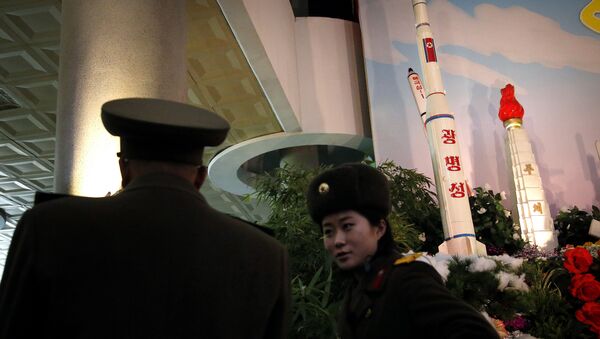According to a US government source who spoke with The Diplomat on condition of anonymity, North Korea shipped components associated with a new satellite launch vehicle to at least within the proximity of their Sanum-dong Missile Research and Development Facility around the turn of the year. According to the anonymous source, North Korean leader Kim Jong Un visited the site in late December 2017, shortly before the movement.
Jeffrey Lewis, the director of the East Asia Nonproliferation Program at the James Martin Center for Nonproliferation Studies at the Middlebury Institute of International Studies at Monterey, told The Diplomat that the the reduction of snow between December 22 and 25 on the rooftop of a building "known to be used in rocket assembly" is a tell-tale sign of activity.
The Diplomat also notes "clusters of vehicles" around the site. The outlet's US sources said that US military intelligence detected what appeared to them to be a heavy transporter for satellite launch equipment.
— Ankit Panda (@nktpnd) January 12, 2018
Cheong Seong Chang, a senior researcher at the Sejong Institute, told NK News that "Pyongyang and Washington's position on their satellite launches are radically different and thus a crisis may arise once again and one cannot say it will not end up with a war."
The Democratic People's Republic of Korea (DPRK) has been repeatedly condemned for attempted satellite launches as analysts and international leaders claim such launches are actually veiled tests of ballistic missiles. North Korea's last satellite launch, of the Kwangmyŏngsŏng-4 in February 2016, was propelled into orbit by an Unha rocket, which partially utilizes the same delivery system as the country's Taepodong-2 long-range ballistic missile.
"Even though the US and its allies try to block our space development, our aerospace scientists will conquer space and definitely plant the flag of the DPRK on the moon," said Hyon Kwang Il, director of scientific research at North Korea's National Aerospace Development Administration, eight months after the launch. He also said at the time that the satellite had "2,513 orbits and that within one day after its launch it transmitted 700 photographic images back to Earth."
According to an analysis by 38 North, there was little activity at the Sohae Satellite Launching Station as of March 14, six days after the announcement of the Trump-Kim meeting.
If the North launches another satellite, say, in celebration of the 70th anniversary of the people's republic's 1948 founding in September, it would violate the UN Security Council Resolution 2087, which bans the country from engaging in "further development of technology applicable to North Korea's ballistic missile programs," including satellite launches.




